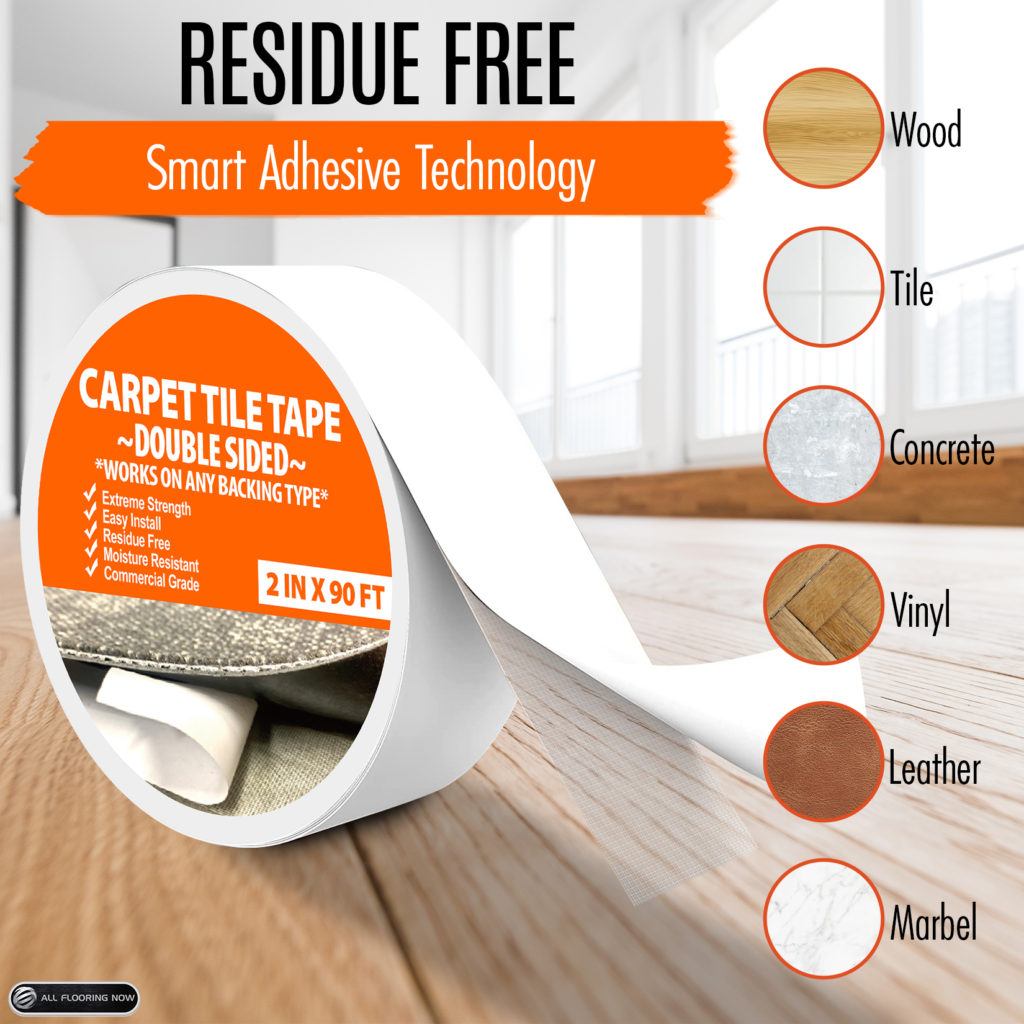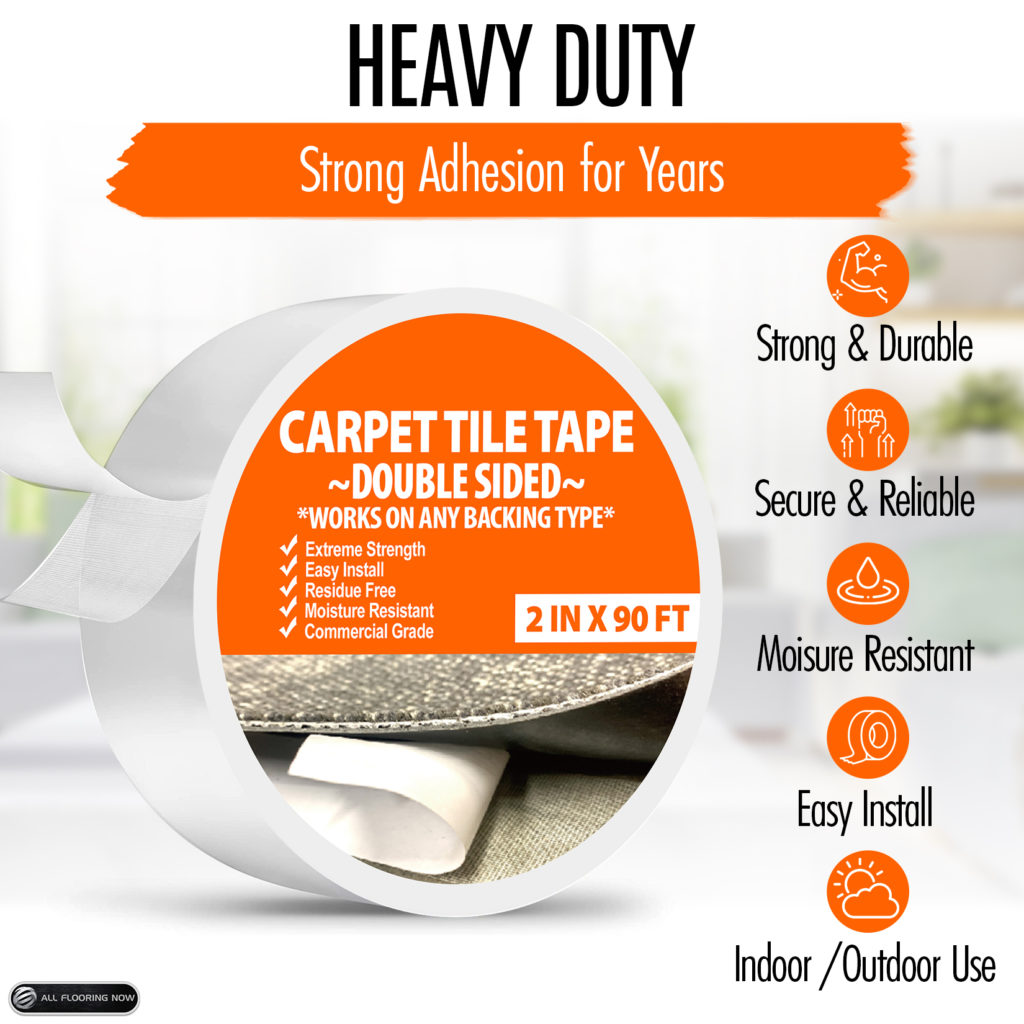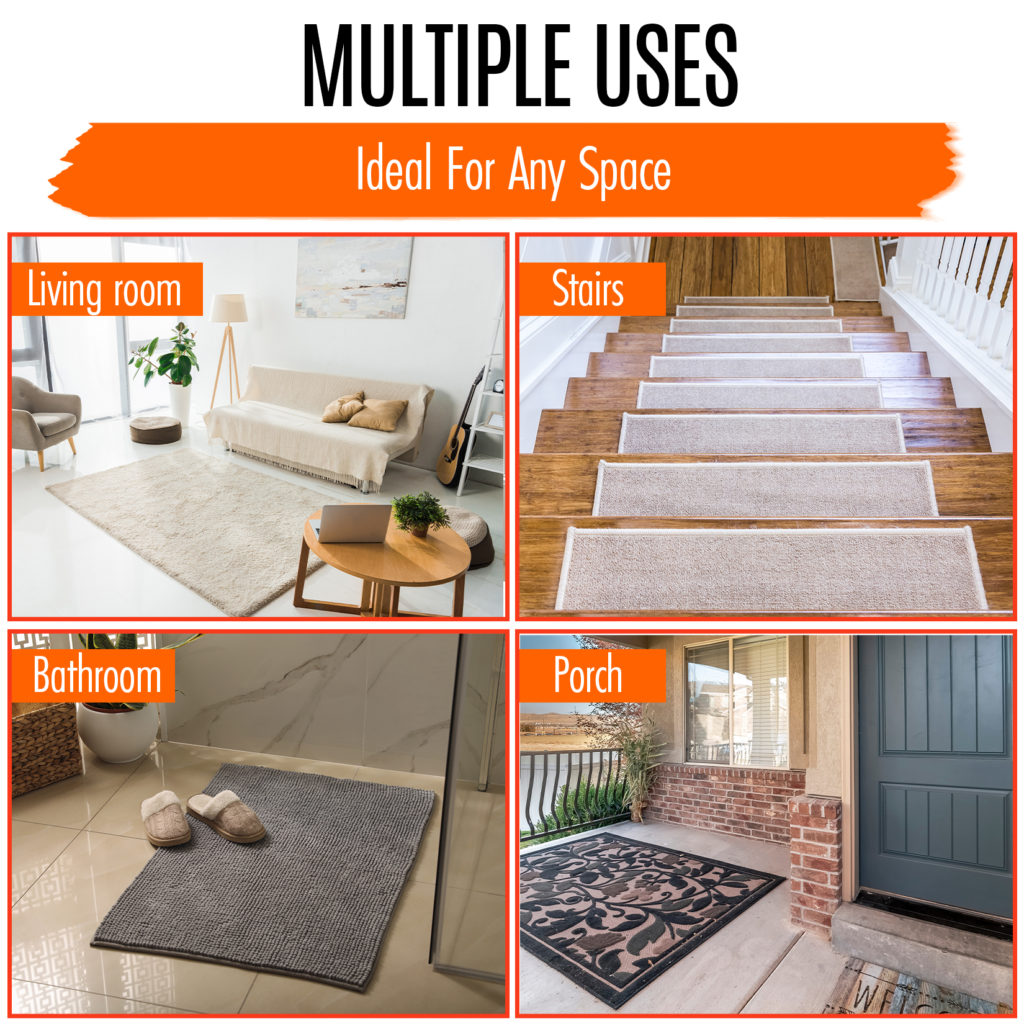Using Double Sided Carpet Tape For Installing Various Flooring Materials
Flooring installation can be a daunting task, requiring precision and expertise to achieve a flawless finish. However, with the advent of modern adhesives, the process has become more accessible and efficient. Among the diverse range of adhesives available, double-sided carpet tape has emerged as a game-changer for installing various flooring materials like vinyl plank, carpet tile, luxury vinyl tile, rubber tile and sheet vinyl. In this article, we explore the benefits and techniques of using double-sided carpet tape, making the installation process faster, easier, and more effective.
- Versatility of Double-Sided Carpet Tape
Double-sided carpet tape is a high-strength adhesive tape with adhesive on both sides. Initially designed for securing carpets to floors, it has evolved into a versatile adhesive for various flooring types, including vinyl plank, carpet tile, luxury vinyl tile, and sheet vinyl. Its double-sided nature allows it to create a strong bond between the subfloor and the flooring material, eliminating the need for messy, time-consuming glues.
- Installing Vinyl Plank with Double-Sided Carpet Tape
Vinyl plank flooring has become increasingly popular due to its durability and aesthetic appeal. When installing vinyl plank flooring using double-sided carpet tape, follow these steps for optimal results:
a. Preparing the Subfloor: Ensure the subfloor is clean, dry, and free from any debris or imperfections. It's essential to have a smooth and level surface for the best adhesion.
b. Applying the Double-Sided Carpet Tape: Unroll the double-sided carpet tape along the edges of the room, leaving gaps of approximately six inches between each strip. Carefully press the tape onto the subfloor to secure it in place.
c. Placing the Vinyl Planks: Begin laying the vinyl planks from one corner of the room, carefully attaching them to the double-sided tape. The strong adhesive will hold the planks securely in position, reducing the risk of gaps or uneven surfaces.
d. Finishing Touches: Once all the planks are in place, use a roller to apply even pressure across the entire floor, ensuring a strong bond between the vinyl planks and the double-sided tape.

- Carpet Tile Installation Made Easy
Carpet tiles are a convenient and stylish option for both residential and commercial spaces. Utilizing double-sided carpet tape streamlines the installation process significantly:
a. Preparing the Subfloor: As with vinyl plank installation, ensure the subfloor is clean, dry, and level. Remove any protrusions or loose materials that could interfere with the carpet tile's adhesion.
b. Applying the Double-Sided Carpet Tape: Place strips of double-sided carpet tape along the perimeter of the room, creating a border. Additionally, create an "X" pattern across the middle of the room for extra adhesion.
c. Fixing the Carpet Tiles: Starting in one corner, tear back the top paper layer of the double sided tape and lay the carpet tiles onto the double-sided tape adhesive. Press down firmly on each tile to ensure it adheres securely.
d. Final Touches: After all the carpet tiles are in place, use a carpet roller to apply even pressure across the entire floor. This step helps to eliminate air bubbles and ensures a tight bond.

- Luxury Vinyl Tile (LVT) Installation Techniques
LVT combines the beauty of natural materials with the ease of maintenance, making it a popular flooring choice. When using double-sided carpet tape for LVT installation, follow these steps:
a. Subfloor Preparation: Prepare the subfloor, making sure it is clean, dry, and level. Repair any imperfections or cracks to ensure a smooth surface.
b. Applying the Double-Sided Carpet Tape: Run strips of double-sided carpet tape along the edges of the room and create a grid-like pattern across the entire floor.
c. Placing the Luxury Vinyl Tiles: Starting from one corner, place the LVTs on the double-sided tape, following the grid pattern. Press down on each tile firmly to achieve a strong bond.
d. Final Adjustments: After installing all the LVTs, use a floor roller to apply pressure evenly, ensuring a seamless and durable installation.


- Sheet Vinyl Installation for a Sleek Finish
Sheet vinyl offers a seamless and water-resistant flooring option for kitchens, bathrooms, and other high-moisture areas. Using double-sided carpet tape simplifies the installation process:
a. Preparing the Subfloor: Ensure the subfloor is clean, dry, and leveled, just like in other flooring installations. Any irregularities may cause imperfections in the finished installation.
b. Applying the Double-Sided Carpet Tape: Place strips of double-sided carpet tape around the perimeter of the room, leaving small gaps between each strip. Create a grid pattern across the rest of the floor for added support.
c. Unrolling the Sheet Vinyl: Roll out the sheet vinyl carefully over the double-sided tape, aligning it precisely with the room's edges and corners.
d. Smoothing and Finishing: Use a floor roller to smooth out any wrinkles or bubbles, ensuring the sheet vinyl adheres uniformly to the double-sided tape.

6. Rubber Flooring Installation Made Simple
Rubber flooring is an excellent choice for high-traffic areas due to its durability and shock-absorbing properties. When using double-sided carpet tape for rubber flooring, follow these steps:
a. Preparing the Subfloor: Ensure the subfloor is clean, dry, and level. Remove any debris or uneven surfaces that could affect the installation.
b. Applying the Double-Sided Carpet Tape: Place strips of double-sided carpet tape along the room's perimeter and create a grid pattern across the entire floor.
c. Fixing the Rubber Tiles/Rolls: Lay the rubber tiles or rolls on the double-sided tape, starting from one corner and working your way across the room. Apply firm pressure to ensure a strong bond.
d. Final Adjustments: After installing all the rubber flooring, use a floor roller to ensure even pressure, securing the rubber in place.

Heavy duty double-sided carpet tape has revolutionized the flooring installation process for various materials like vinyl plank, carpet tile, luxury vinyl tile, and sheet vinyl. Its versatility, ease of use, and strong adhesion properties have made it a preferred choice among professionals and DIY enthusiasts alike. By following the proper techniques outlined in this article, you can achieve a flawless and long-lasting flooring installation that will enhance the beauty and functionality of your space for years to come.





